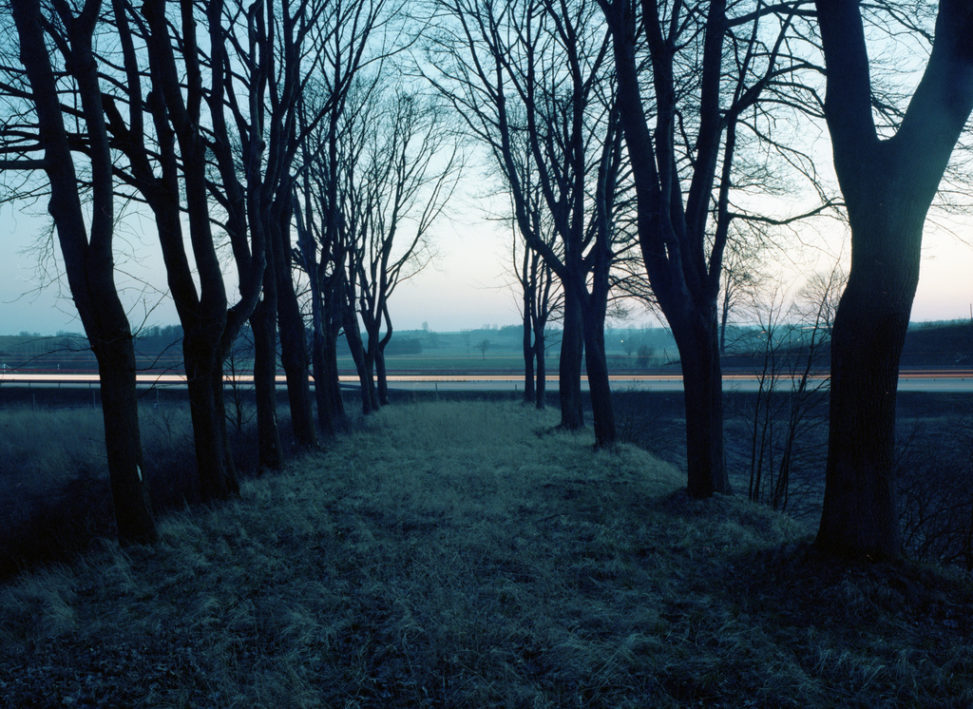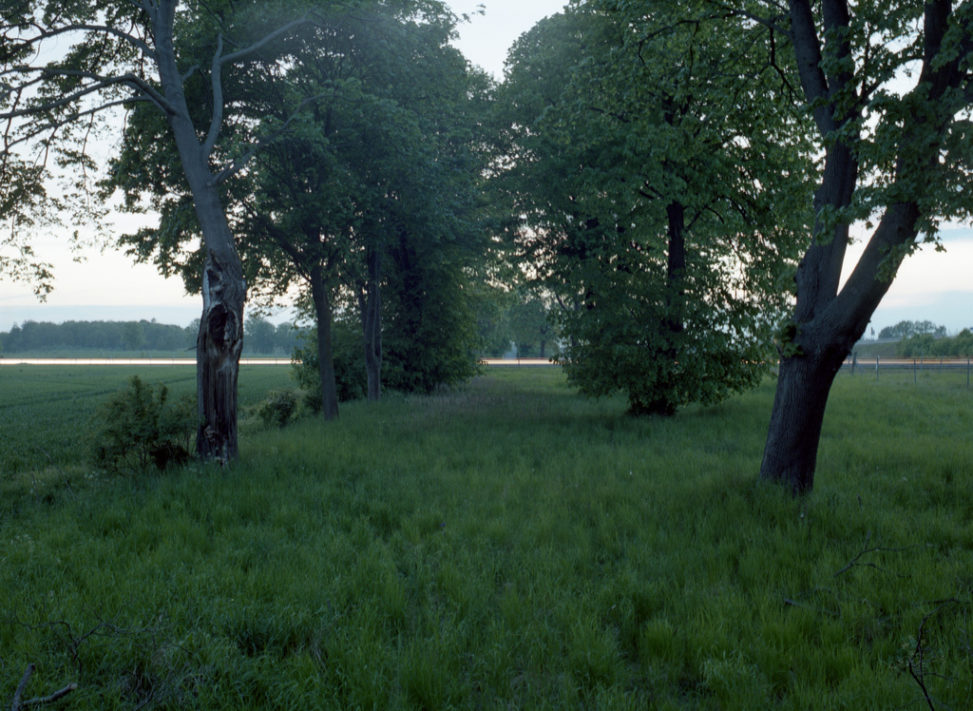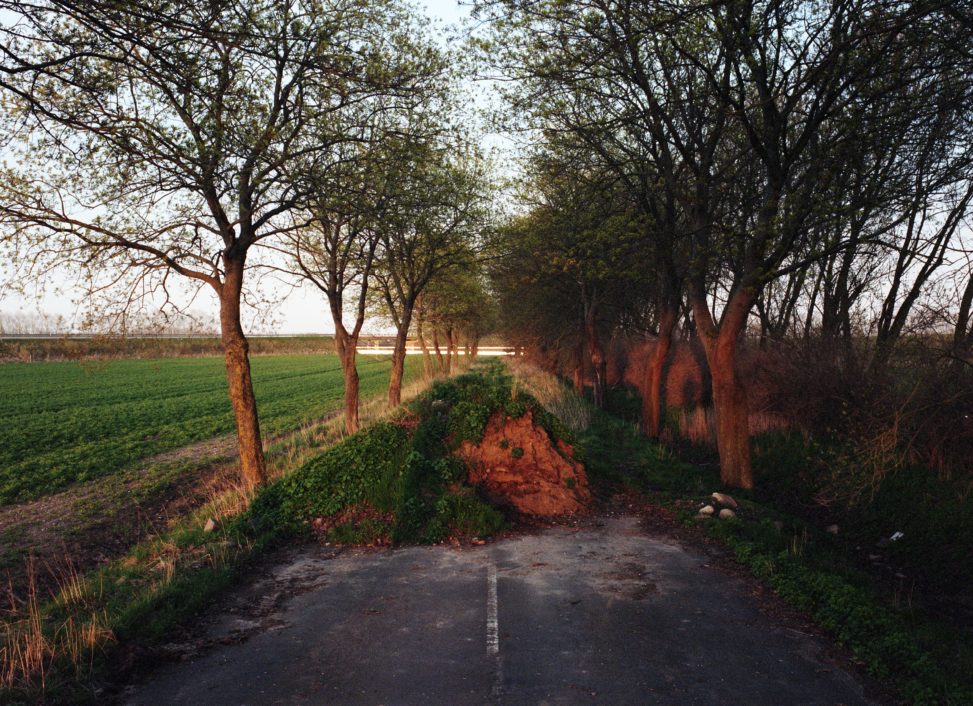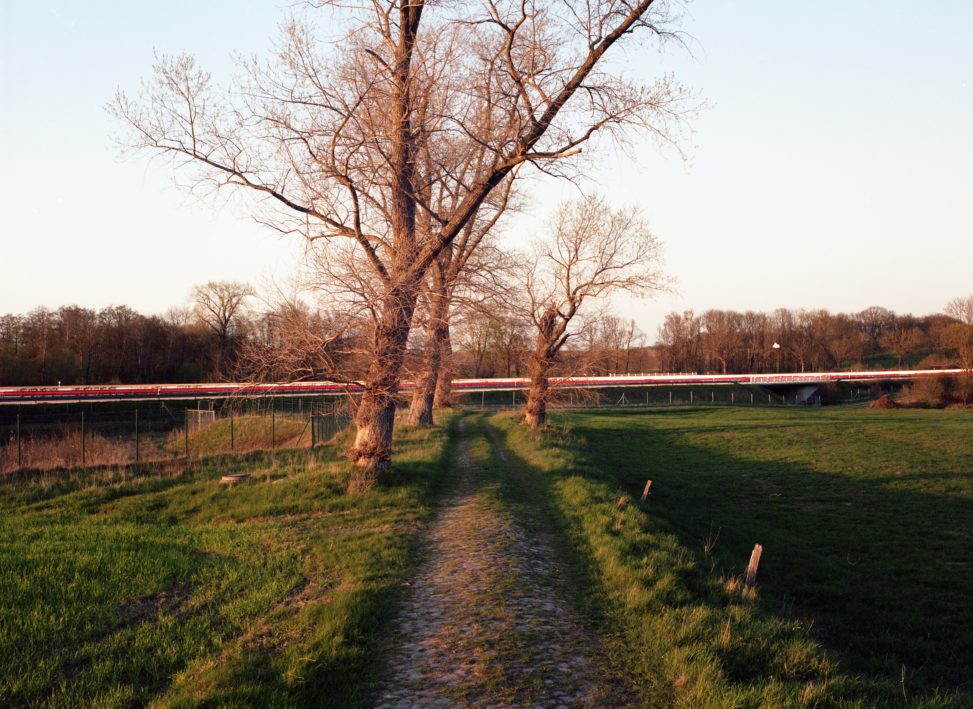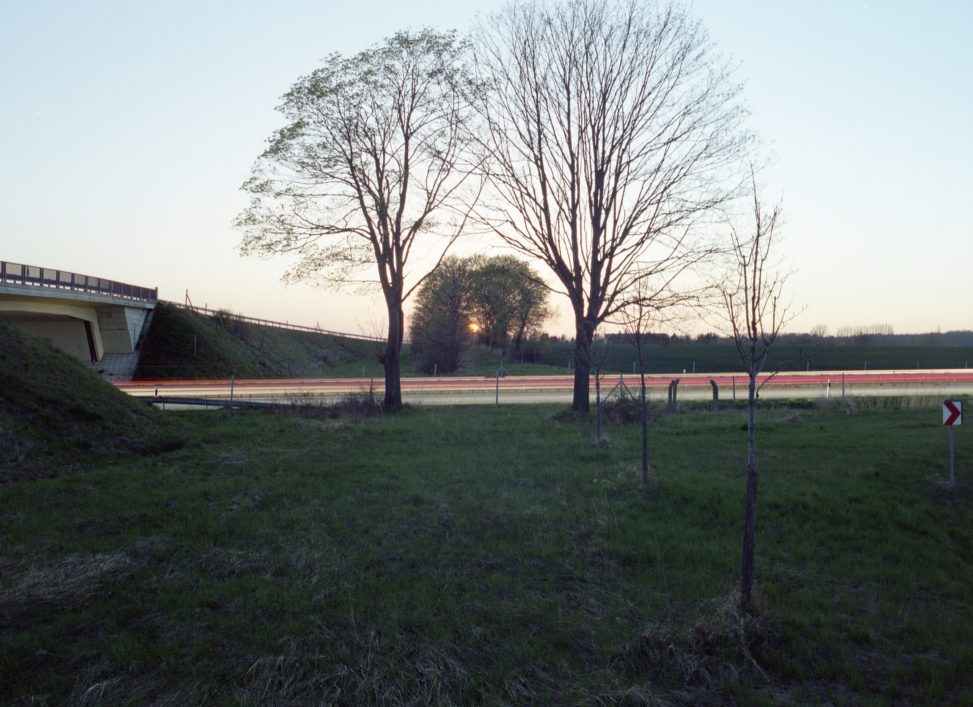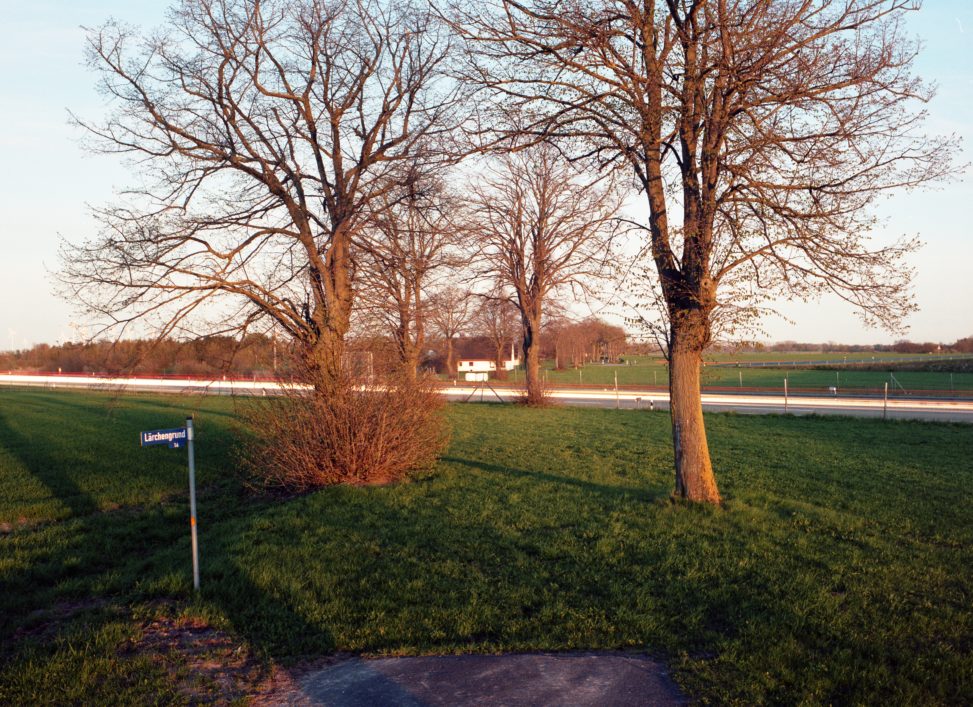Accumulated Traces of Realities
Text by Conny Becker
Richard Rocholl’s series The Avenues (2012–2014), that is part of a group of works titled AUTOLAND, oscillates between photography, film and painting; between a romantic subject and a critique on our increasing mobility, resulting in harsh interventions into the landscape. Rocholl has photographed a number of old avenues around the wider Berlin area, using the manner of the classic avenue depiction, a viewpoint down the lines of trees. The historic country roads that he documents, however, have long since lost their function and are now intersected by the more direct and ‘efficient’ motorways. The old avenues have grown wild—some more, some less—introducing a romantic aspect to the images.
Rocholl’s approach isn’t purely documentary, though. He retraces the movement of humans through the landscape; however, the artist captured this movement as it happens, and the people are contained by objects, that is, speeding vehicles. The images are initially taken during daylight, but with just half the accurate exposure time. Rocholl then leaves his camera exactly where it is on the tripod until dusk. He then completes the exposure with multiple additional frames, which capture the blurred lights of vehicles as they pass by on the motorway. This technique results in an unreal amalgamation, created from multiple moments in time inscribing traces onto one analogue photograph. Thus, the work can be understood as an index in the sense of Charles Sanders Peirce for two reasons: firstly, for the motif, the pathways, roads and motorways are indexical signs of human civilisation. And secondly, for the artistic technique used: photography,
because the physical effect of light during exposure creates an existential one-to-one-correspondence between the parts of the photography and the parts of the object (…) 1
Roland Barthes calls this ‘necessary real thing, that has been placed in front of the lens’ a ‘photographic referent.’ In contrast to painting, it is impossible to deny ‘that the thing has been there’ 2 in photography. This very combination of reality and past is what Barthes sees as the essence of photography. In principle, those paradigms prevail in Rocholl’s AUTOLAND—The Avenues series, since he chooses not to use any kind of digital manipulation. He, instead, montages the realities of different moments in time with multiple exposures. This intervention, the multiplication of the photographic referent within a single frame, can be observed by the viewer in the unusual lighting situations where the position of the sun does not fit with the somewhat gloomy light.
The 5 to 6 seconds of exposure time at night—the time span of a car travelling through the frame from edge to edge—creates a surreal detail which closes the gap between photography and painting. The human eye sees the cars with their lights, the photographic plate together with the factor time, draws a thick line on the photographic film. This is where romantic landscape photography meets mechanical hard-edge painting.
_
1 Charles Sanders Peirce, cited in Sonja Neef: Abdruck und Spur, Kadmos, Berlin, 2008, p. 43; author’s translation.
2 Citations of Roland Barthes; Die helle Kammer, Suhrkamp, Frankfurt/ Main, 1985, p. 86; author’s translation
